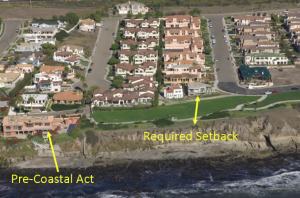Less than one week remains to comment on important proposed changes to the CEQA Guidelines that flow from the 2013 adoption of “SB 743.” Once phased in, these Guidelines will change the evaluation of a project’s potential transportation impacts and, if the Guidelines function as the Governor’s Office of Planning and Research (OPR) desires, alter the pattern of California land development. Under the Guidelines, vehicle miles traveled (VMT) will replace level of service (LOS) as the standard a lead agency must measure a project’s traffic impacts. Under the new metric, what was mitigation for traffic impacts, such as the widening of roads, will soon be considered a significant impact. Accordingly, the implications of these Guidelines go beyond the need for traffic engineers to retool their traffic models (itself a complex task).
Of course changing CEQA is bound to be controversial. OPR’s first Guideline proposal generated numerous and diverse comments, reflecting differences among California’s lead agencies’ size and access to transit, and stakeholders’ individual (often ideological) views on transportation. As a result, OPR issued a second set of proposed Guidelines on January 20, 2016, which can be viewed on OPR’s website. Comments on this latest draft must be submitted to CEQA.Guidelines@resources.ca.gov by 5:00pm on February 29, 2016.
Practical Implications of the New Guidelines
OPR proposes to revise Appendix G, which is the heart of the proposed Guidelines. Although Appendix G is provided for guidance only, agencies typically follow it almost to the letter. As proposed, the transportation significance thresholds in Appendix G would eliminate questions related to LOS and instead focus on VMTs, including whether a project would induce additional automobile travel by increasing physical roadway capacity. In addition, OPR proposes technical guidance, to be published as a separate document, to help lead agencies implement the new Guidelines. This technical guidance includes recommended quantitative thresholds and analysis methods for determining the transportation impacts from various types of projects, including residential, retail, office, and roadway development. Following are some of the practical consequences that we foresee resulting from the proposed changes: Continue reading
 Lay of the Land
Lay of the Land



